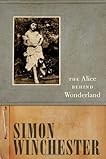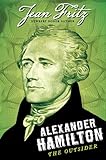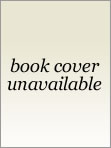The Great Pretender: The Undercover Mission That Changed Our Understanding of Madness by Susannah Cahalan
My rating: 5 of 5 stars
The woman’s name doesn’t matter. Just picture anyone you know and love. She’s in her mid-twenties when her world begins to crumble. She can’t concentrate at work, stops sleeping, grows uneasy in crowds, and then retreats to her apartment, where she sees and hears things that aren’t there — disembodied voices that make her paranoid, frightened, and angry. She paces around her apartment until she feels as if she might burst open. So she leaves her house and wanders around the crowded city streets trying to avoid the burning stares of the passersby.
In 2009, Susannah Cahallan was hospitalized with what appeared to be classic symptoms of schizophrenia: paranoia, delusions, violent impulses. Anti-psychotic medications didn’t help. Test after test found nothing useful. Until one did, and as soon as the medical establishment was able to identify her illness as auto-immune encephalitis rather than psychosis, everything about her treatment changed: “Hope, clarity, and optimism replaced the vague and distant treatment. No one blamed me or questioned if each symptom was real. They didn’t ask about alcohol consumption of stress levels or family relationships. People no longer implied that the trouble was all in my head.”
In 2012, Cahalan published Brain on Fire: My Month of Madness, a memoir of her experience. A variety of subsequent encounters led her to continue looking into the history of psychiatry and the fine line between sanity and madness, and how society identifies those on either side of that (shifting) line. That brought her to the story of Stanford psychologist David Rosenhan and his 1973 “pseudopatient” experiment: Eight healthy people got themselves committed to psychiatric facilities and then had to prove their sanity to get released.
The resulting Nature article, “On Being Sane in Insane Places”, cast a glaring spotlight on what appeared to be serious problems in diagnosis and treatment of mental illness. But there seemed to be holes in the story, questions without answers. Rosenhan died in 2012, never having finished the follow-up book he was contracted to write. The volunteers were never publicly identified.
Cahallan digs into the details of what happened and how it affected the development of psychiatric care. She also looks backward, into the various threads of psychological theory and their supporters and detractors over the years. From Nelly Bly’s 1887 undercover investigation at Blackwell Island through the mass closure of mental institutions a century later and into the present day, it’s a fascinating and sometimes appalling tale, told with a story-teller’s flair.
In the words of medical historian Edward Shorter, “The history of psychiatry is a minefield. Reader: Beware of shrapnel.
Source: Checked out from my public library
Challenges: N/A
View all my reviews









